***Ervin Davis, the creator and maintainer of this website passed away April 22, 2007.
 |







 |
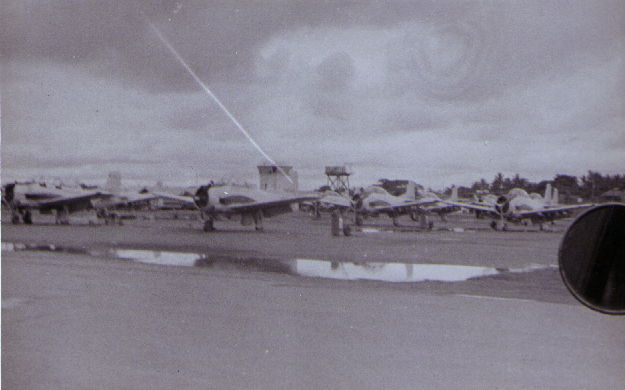 | 'Secret Air Force' T-28's on Flight line at "Project Water Pump", where their flight Call Sign was "Tiger", but others occasionally also used ; such as "Zorro" (normally assigned to NKP), "Victor" (assigned to Wattay birds), etc.
NOTE : WW-II Japanese Tower in background (left) beside water tank tower (right). | ||
 | C-46 parked in front of Air America Headquarters for all South Asian / Pacific operations Restricted Area N-E Thailand | ||
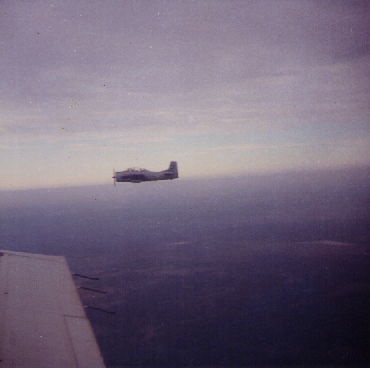 | Hummmmmmmmmm mmmmmmmmmmmm Love that sound ! NOTE : T-28's were the first American built Counterinsurgency fighter used during the Vietnam War. | ||
 | Wattay International Airport Vientiane -(Capital of)- Laos, 1967 NOTE : Soviet aircraft, lower left of photo. Soviets aided 1960 coup d'�tat invasion of Vientiane, flying in Kong Le guerrilla forces. NOTE : Soviets also flew covert missions from Wattay, dropping guns to Pathet Lao, while our side also flew from Wattay, dropping 'materials' to their Meo (Hmong) victims. NOTE : Air America in old Civil Air Transport hangar on left, 'B.I. Bird & Sons Co">' hanger outside of view lower left (SEE : " White Star") (Site Code : L-32) | ||
 | Royal Lao Air Force 'designated' T-28's parked at Wattay Air Field, Laos in 1967 NOTE : Detachable national ID placard on side of aircraft & 'NO' RLAF tail logo :-) | ||
 | NOTE : Royal Lao Air Force T-28 # 0-00306 following Pathet Lao 1966 sapper attack at Louang Phabang (Site Code : L-54) NOTE : RLAF tail logo | 50 caliber BMG, 500 lb "Daisy Cutter" bomb & two 250 lb. bombs.NOTE : Our "Daisy Cutter" Bombs were an invention of an ingenious A.A. employee who grasp the idea during a night of drinking. A day or so later his drinking buddy, RLAF Airman at L.P., gathered the needed materials for the R & D prototype and started welding used aircraft gun barrels directly into the nose fuse cavity of bombs !
| |
 |
|||
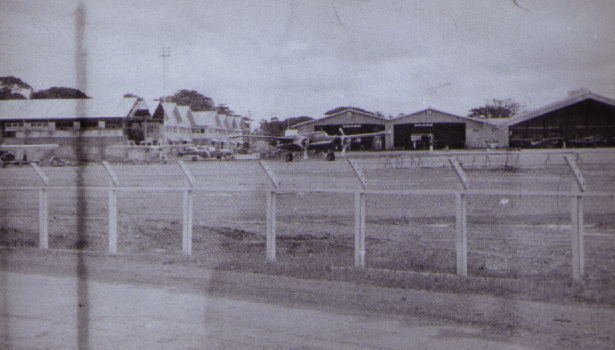 | Air America Hqts NOTE : Secret EB-26 Electronic Warfare aircraft parked in front of Air America's Maintenance Hangers at Udorn in 1967, known as one of "The Company Planes".
| 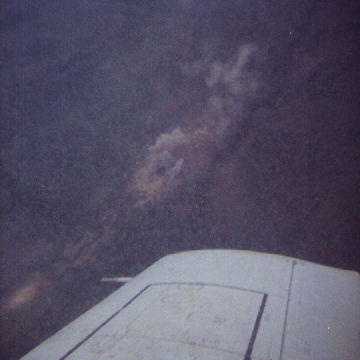 "G'Morning, Charlie !" | |


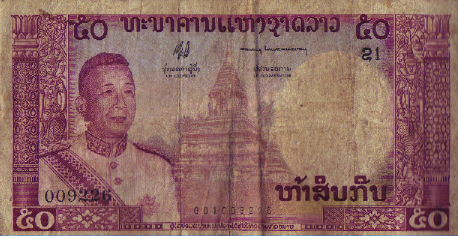


Please sign and read my
Guest Book
The old Guest Book can be viewed here.
Visit one of my other sites :
Udorn RTAFB
My War : My Secret
Lao Pilots : Secret War
A Southeast Asian History

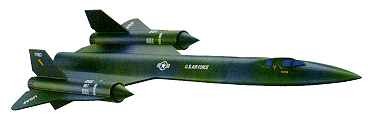
Follow this link to my military page
("Must See" for 462's)

war in Laos, it is NOT intended to provide 'every answer'.
Please address any kind comments to :
former S. Sgt. Ervin 'Dave' Davis
66-67 'Waterpump'
462
"Any Time, Any Place"